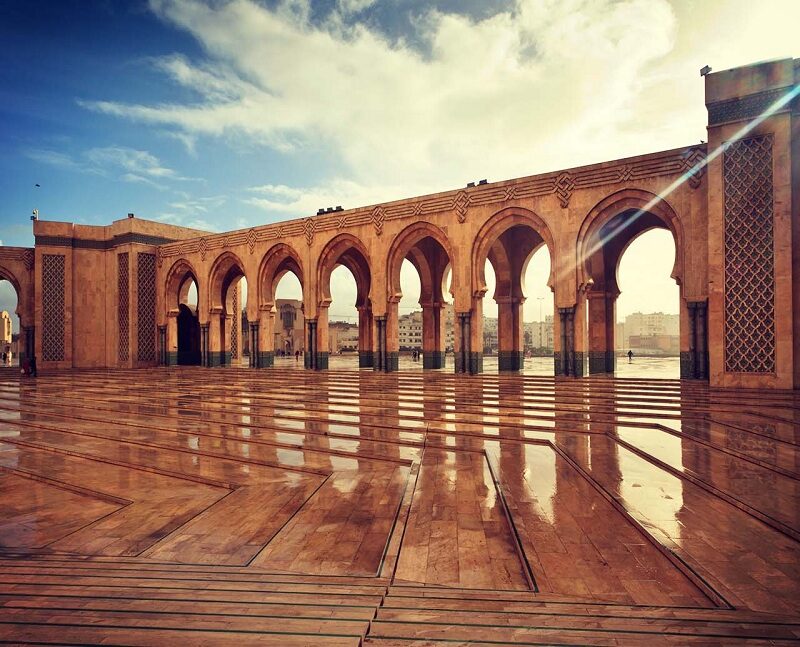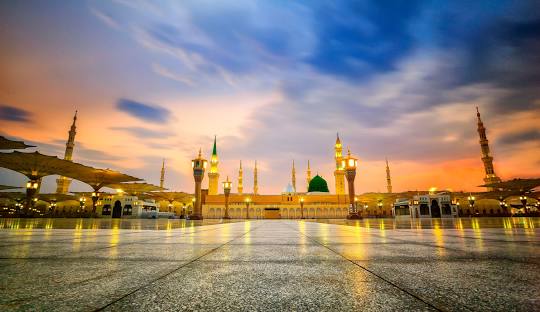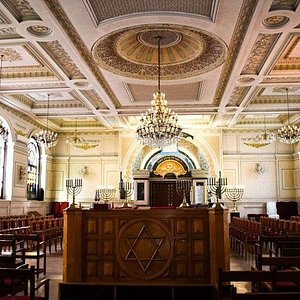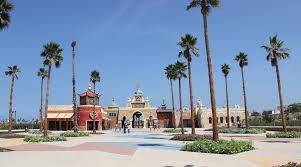
CASABLANCA is the largest city in Morocco, not to mention the economic heart of the country. Although it doesn’t attract as many tourists as cities like Marrakech, Fez, and Tangier, Casablanca still offers plenty of great things to see and do. Enjoy ocean views and some of the best Moroccan tapas where you’ll get to enjoy walking tours and taste authentic cuisine.


The 19th-century medina of Casablanca is mainly a residential area today. Nonetheless, walking through the narrow streets and resting for a while in one of the many nice cafes and restaurants is a pleasant way to understand a bit more of what makes the city tick. Look for the street art that adorns some of the walls.
It was built under the French protectorate by architect Joseph Marrast, and it represents an example of the architecture of the 1920s, mingling tradition and modernity.
The square is considered the administrative center of the city, as it brings together plenty of buildings erected after the First World War including the Consulate of France, the courthouse, the prefecture, the central post office, and the bank of Morocco. Casablanca’s main square, Place Mohammed V is surrounded by attractive buildings and palm trees. The paved square is the administrative heart of the city.

In the heart of Casablanca, a surprising sight is the huge Cathedral Sacre-Coeur or the Casablanca Cathedral. All at the same time its unique architecture and its surroundings seem both out of place and in harmony with the disused church of Casablanca Cathedral.
A huge former Roman Catholic church, Sacre Coeur Cathedral was built in the 1930s. Painted in gleaming white, the front is flanked by two tall towers. The Casablanca Cathedral is also known as the Cathedrale Sacre-Coeur de Casablanca, Sacre-Coeur Cathedral. The Casablanca Cathedral is located in Casablanca, Morocco. It is a Gothic Revival style, Art Deco, and modern type cathedral. To the Sacred Heart, it was dedicated. The address for the Casablanca Cathedral is – Parc de la Ligue Arabe, Casablanca, Morocco.
Another of Casablanca’s architectural beauties to be admired from the outside, Mahkama du Pacha is a courthouse. Constructed from marble and wood, it was built in a Hispano-Moorish style. La Mahkama Du Pacha is another beautiful building you can find on Muhammed V Square. It was conceived in 1925 by a French architect called Auguste Cadet. It is the court of justice that also serves as a venue for special state receptions. It was conceived in the French Arab style called Mauresque with strong Moorish elements. Some features remind you of Granada’s Alhambra. Some give a glimpse of Persian madrasahs. The main portal looks like a Persian Iwan. As you enter into the main hall the arched ceiling and the central courtyard look like those of a beautiful mosque. You can see carved cedar ceilings, elegant mosaics, and carved stucco in the graceful interior. Stylish geometric patterns have been used here. It was a pleasure to see such a graceful building.

This museum dedicated to the Jewish culture is unique in the Islamic World. It is a private ethnographic museum, consisting of two distinct spaces:
A space reserved for temporary exhibitions
A second space, with 3 rooms, for permanent exhibitions.
The pathway through the permanent exhibitions gives visitors a front-row seat to the enhancement of the authenticity of Moroccan Judaica, as well as to the diversity of Moroccan synagogues and their interiors.


One very pleasant feature of the visit: the sweet singing birds of the adjoining gardens accompanies visitors’ discovery of beautiful pieces of Moroccan Jewish craftsmanship! Bracelets and fibulas in 19th-century silver, pendants, amulets, and ankle bracelets. One window also displays dolls dressed in Judeo-Moroccan costumes.
A larger section is dedicated to sacred art: megillah cases, Thoras covered with their gold thread embroidered coat, and synagogue furniture. There is also beautiful 18th-century Azemmour embroidery.
A section also exhibits tebahs from ancient synagogues or reading platforms made of carved wood where a rabbi would officiate. A beautiful set of rooms to discover in an extremely pleasant and relaxing setting.
The lively Central Market is one of the best places in Casablanca to see how locals shop and to pick up an array of traditional goods and souvenirs. Colorful babouches (traditional leather slippers) and clothes hang in front of stalls. Women shop for spices and fresh produce. Cookware and home items are abundant.
The Central Market was designed by Pierre Bousquet, and construction was completed in 1917, on the site of the Casablanca Fair of 1915. The Central Market was the most important marketplace in Casablanca’s European Ville Nouvelle.
The Moroccan nationalist resistance fighter Muhammed Zarqtuni bombed the Central Market on December 24, 1953, after French forces forced Sultan Muhammad VI into exile on August 20, 1953—which was Eid al-Adha.



I consider myself a “citizen of the world.” Alas, I have a bad case of wanderlust!
Get Notified About Next Update